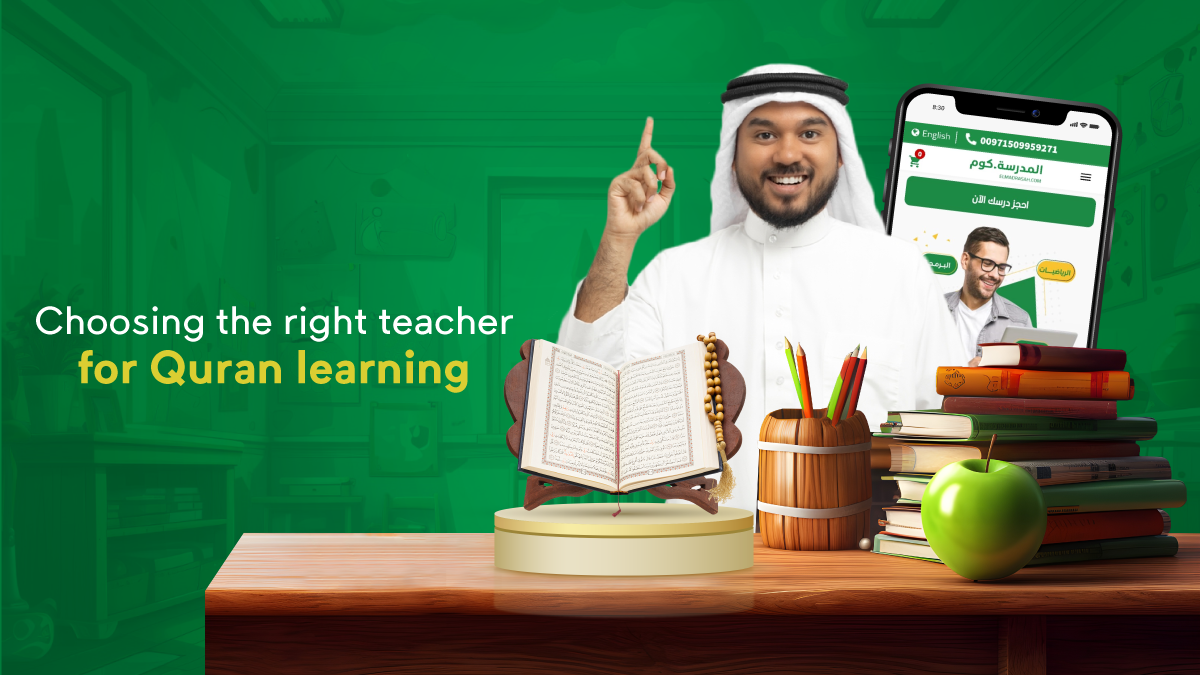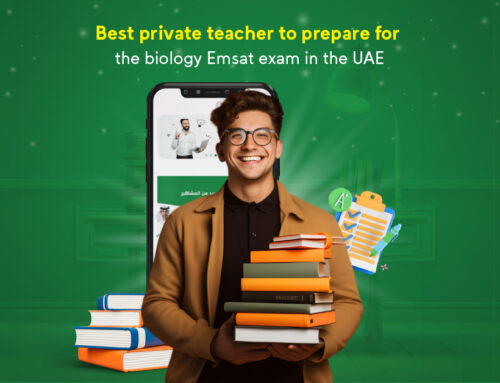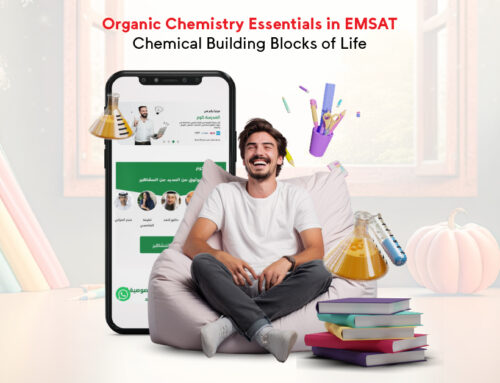
The Holy Qur’an certainly has a magical effect on everyone who hears it, and on the soul of everyone who memorizes it. The Holy Qur’an was sent down to people from Allah (SWT) the Lord of the Worlds as a mercy to them, so that they may be healed by it and take lessons and advice from it, and as guidance for them in the affairs of their religious and worldly lives, whether in their work or trade. Or with their families and their dealings with others, and there is healing for the soul as well, to understand ourselves and direct and straighten us to the right path, so learning the Holy Qur’an is an essential part of every Muslim’s life. Still, it is not easy to learn the Holy Qur’an, especially given its difficulty in pronunciation and other things, so you must find a specialist and know how to choose the right teacher for Quran learning.
E-learning
One of the most important difficulties facing those who try to learn the Holy Qur’an is the location, whether it is far away or the lack of appropriate or sufficient time to go to the students or parents themselves. Therefore, e-learning facilitated this obstacle and learning became easier and available at any time and place.
Simply put, e-learning is a field concerned with employing modern technology, especially communication and information technologies, in the learning and teaching process. The history of e-learning goes back decades, and it has witnessed significant development over time.
Initially, e-learning was done through the use of print media, tape recordings, and video tapes. With the development of technology, CDs and interactive lessons on personal computers began to be used.
With the emergence of the Internet and the expansion of its use in the world, e-learning methods have evolved to include online lessons, live lectures via video, and effective communication between the teacher and the student remotely. E-learning platforms have also emerged that provide diverse and interactive educational content that learners can access online.
As technology advances, technologies such as virtual reality and augmented reality are being used in e-learning to provide rich and engaging learning experiences. Group learning platforms that allow learners to interact and collaborate with each other in online educational contexts have also become widespread.
Currently, e-learning is developing rapidly with the spread of artificial intelligence and machine learning technologies. These techniques are applied in analyzing the learner’s behavior and providing customized educational content and plans according to his or her individual needs.
In short, e-learning has evolved from traditional methods to using modern technologies such as the Internet, virtual reality, and artificial intelligence. This development contributes to providing diverse and effective educational experiences for learners in the fields of the Arabic language and teaching the Holy Quran.
But how has e-learning facilitated the process of teaching for teacher for learning Quran:
- Access to various educational resources: Through e-learning, the teacher for learning Quran now can access diverse and rich educational resources on the interpretation of the Holy Quran, its Tajweed, and the rules of Tajweed and interpretation. I use these resources to prepare my lessons and provide diverse and useful content to students.
- Distance education: E-learning allows lessons to be provided remotely, as I can provide live lessons and lectures to students via video or interactive lessons online. This allows students to benefit from teaching the Holy Quran regardless of their geographical or temporal location and contributes to providing flexibility in the schedule and saving time and effort for students and parents.
- Providing interaction and immediate feedback: Through the interactive tools available in e-learning, I can effectively track students’ progress, evaluate their performance, and give immediate feedback. I use online testing systems and e-learning platforms to assess the skills and Quranic understanding of students and guide them individually.
- Providing interactive educational resources: I use multimedia and interactive technologies in e-learning to attract students’ attention and motivate them. I use audio, images, video, animation, and interactive applications to illustrate concepts and enhance students’ understanding of the Quran.
- Effective communication and participation: E-learning allows students to communicate and participate in discussions and collaborative activities via electronic educational platforms. I can encourage students to ask questions, exchange opinions, and interact with this technology-based experience that has contributed to enhancing interactive learning and encouraging collaboration among students.
In general, the use of e-learning in teaching the Holy Quran has contributed to improving and facilitating the learning and teaching process. It provides flexibility for learners to access educational resources anytime and from anywhere and allows teachers to deliver diverse and interactive lessons. It also contributes to enhancing interaction, providing immediate feedback, and allowing students to collaborate and communicate with each other.
As technology advances, e-learning continues to develop and improve, and new technologies are employed to improve the learning experience and enhance students’ understanding of the Holy Quran.
Let us not forget that there are many interactive tools that can be used to teach the Holy Quran. Here are some examples of these tools:
- Applications and educational programs: There are many applications and educational programs that aim to teach and enhance understanding of the Holy Quran. These applications can provide interactive exercises to improve students’ reading, and intonation, providing detailed explanations of the rules of intonation and interpretation. Some examples of popular applications in this field are the Medina Qur’an, the electronic wallet application, and the Qur’an application.
- Interactive Presentations: Interactive presentations such as Microsoft PowerPoint or Google Slides can be used to explain the concepts of the Holy Quran and the arrangement of verses and surahs. I create interactive presentations with graphics, photos, videos, and reference links to improve students’ understanding and encourage them to participate and interact.
- Electronic educational platforms: There are many e-learning platforms that can be used to teach the Holy Quran. These platforms allow teachers to create interactive lessons that can be accessed online. Audio clips, videos, interactive exercises, and quizzes can be included across these platforms. Some examples of e-learning platforms are Google Classroom, Moodle, and Edmodo.
- Educational games: Educational games can be used to make the process of learning the Holy Quran fun and interactive. Educational games can be designed that include challenges, puzzles, and questions based on Quranic knowledge. Games can contribute to enhancing memorization and improving students’ Qur’anic skills.
- Educational videos: Educational videos can be used to explain Quranic concepts in a visual and visual way. Lessons on interpretation of the Holy Quran, Tajweed rules, intonation of rulings, and more can be filmed using videos. These videos can be uploaded to video-sharing platforms such as YouTube and provided as an educational resource for students.
These are just some examples of interactive tools that can be used to teach the Holy Quran. Appropriate tools depend on the needs of the teacher, students, and available technology. A combination of these tools can be used to enhance the learning experience and achieve better results.
Online Quran learning
We learned how e-learning helped teachers facilitate the process of teaching the Holy Quran to students, but what about the students? How did technology, or more precisely e-learning, help students facilitate the process of learning the Holy Quran?
E-learning has many benefits that facilitate the process of learning the Holy Quran for students. Here are some ways in which e-learning can be useful in facilitating the process of learning the Quran:
- Easy and Flexible Access: E-learning provides students with easy and flexible access to Quranic educational materials. Students can access lessons, recitations, interpretations, and electronic Qurans from anywhere and at any time that suits them. This means they can benefit from educational resources at home, at school, or on the go.
- Interactivity and encouragement: Interactive tools can be used in e-learning to make the process of learning the Qur’an interesting and interesting for students. Educational videos, audio, and games can be used to clarify concepts, stimulate interest, and enhance engagement with the subject matter.
- Teacher-student interaction: E-learning can facilitate communication and interaction between teachers and students. Students can ask questions and inquiries and receive guidance through email, chat, or e-learning platforms. Teachers can provide one-on-one guidance, evaluate student progress, and provide feedback and guidance online.
- Adapting pace and level: E-learning can provide a personalized learning experience for each student according to their level and abilities. The learning pace and level of challenge can be adjusted to the student’s needs, allowing them to progress at their own rate according to their individual abilities.
- Providing additional resources: E-learning can provide a wide range of additional resources for learning the Qur’an. Students can access Quran interpretations, recorded lessons, e-articles, and Quranic texts easily. This helps them increase their understanding of concepts and delve deeper into the study of the Qur’an.
- Evaluation and follow-up: E-learning platforms provide a means to evaluate students’ performance and monitor their progress in learning the Qur’an. Teachers can create online tests and assessments to measure students’ understanding and progress in recitation, memorization, and grammar application. Teachers can effectively track and evaluate students’ progress and provide necessary feedback and guidance to improve their performance.
Despite these benefits, we must note that e-learning is not a complete alternative to traditional learning, especially in learning the Holy Quran which also requires direct communication with a qualified teacher and benefiting from the spiritual and educational aspects that face-to-face learning provides. E-learning should be used as an aid to enhance and improve the process of learning the Holy Quran and provide flexibility and diversity in access to educational resources.
How did e-learning help enhance the process of learning the Holy Quran among students and teachers? Here are some examples of how e-learning has helped improve the learning process:
- Ease of communication and interaction E-learning allows students and teachers to communicate and interact easily and at any time. Students can ask questions and participate in discussions via online educational platforms, email, and live chat. Teachers can respond to queries and provide guidance in real-time, which enhances engagement and contributes to a better understanding of the subject matter.
- Make it easy for teachers to monitor progress and assessment using e-learning management systems to monitor students’ progress and evaluate their performance. They can give assignments online and provide evaluations and feedback on performance. This allows teachers to identify students’ strengths and weaknesses and provide the necessary help and guidance.
- In addition to easy access to various educational resources, e-learning allows students and teachers to access diverse and rich educational resources. Teachers can provide diverse educational content including educational videos, interactive exercises, and additional materials to enhance students’ understanding and expand their knowledge. This helps inspire and motivate students to learn.
- It also enables independent and flexible learning. E-learning allows students to become independent learners and progress at a pace of learning that suits their personal abilities. Students can access educational materials and undertake exercises and lessons at times that suit them and according to their schedule. This gives them the flexibility to explore and learn according to their individual needs.
- The global availability of e-learning makes it possible to provide education to students all over the world, regardless of geographical distances or time barriers. Students can access and benefit from online educational materials anywhere and at any time that suits them, opening up learning opportunities to individuals who may not be able to access traditional education.
Despite the benefits of e-learning, we must also note that it requires building good technological infrastructure and a stable internet connection to ensure a smooth online learning process. Teachers must also be familiar with e-learning tools and online teaching methods to ensure an effective educational experience.
In general, it can be said that e-learning has contributed to enhancing the ease of learning and communication between students and teachers.
Choosing the right teacher for Quran learning
Despite the benefits of e-learning, students and teachers can face some challenges during the e-learning process. Here are some examples of these challenges:
- Communication and interaction: Communication and interaction may be more difficult in e-learning compared to face-to-face learning. Students may find it difficult to ask questions or get immediate guidance from teachers. In addition, there may be less non-verbal and social communication between students in an e-learning environment.
- Discipline and organization: E-learning requires students to be more disciplined and self-organized. Some may have difficulty setting priorities and managing their time effectively. It can be difficult for students to stay committed and organized without clear structure and guidance from teachers.
- Access to Technology: Students may have difficulty accessing the technology needed for e-learning, such as computers and stable internet. This can be especially challenging for students who live in remote areas or environments with limited resources.
- Encouragement and support: E-learning requires teachers to provide the necessary encouragement and support to students remotely. Teachers must provide necessary guidance and support to students, monitor their progress and provide appropriate feedback. This can be a challenge especially when there is a large number of students and time and resources may be limited.
- Distraction and distraction: In an e-learning environment, students can easily become distracted and distracted. There may be many potential distractions such as social media and online posts. It can be difficult for students to maintain focus and attention for a long period of time during e-learning.
- Ability to concentrate: E-learning requires students to be able to concentrate for long periods of time without external stimuli such as the presence of a teacher or classmates. It may be difficult for some to maintain focus and attention for long periods without getting distracted.
- Special Needs: Students with special needs may face additional challenges in e-learning. It can be difficult to provide the support and adaptation needed to meet their individual needs remotely. These needs can include students with motor, hearing, visual, or autism spectrum disabilities, among others.
- Social and Interactive: Social and interactive aspects are an important part of the learning process. In an e-learning environment, students may feel isolated and lose the opportunity to collaborate with colleagues and exchange ideas and opinions. It can be difficult to encourage active interaction and build social relationships in a remote learning environment.
- Fair Evaluation: Fair and objective evaluation can be a challenge in e-learning. It can be difficult to fairly assess student performance through electronic means alone, especially when relying on online tests or restricted activities.
- roviding instant responses: Providing instant responses and personal guidance to students in e-learning can be difficult. It may take time for teachers to respond to students’ queries or provide immediate feedback on their performance. This can affect the speed of progress and students’ personal learning experience.
To overcome challenges in the e-learning process, the following strategies can be used:
- Providing an appropriate learning environment: A comfortable and appropriate learning environment must be provided for students. This can be achieved by providing a stable internet connection and computers or tablets that meet the learning needs. It is also possible to provide an easy-to-use e-learning platform that allows interaction and communication between students and teachers.
- Providing technical support: Effective technical support must be provided to students and teachers to deal with any technical issues that may arise. Efficient means of communication such as email or live chat can be provided for timely technical assistance.
- Interaction and Collaboration: Interaction and collaboration among students can be enhanced through the use of social media and group learning platforms. Small group discussions can be organized via video or chat to enable students to exchange ideas, opinions and co-learn.
- Time regulation and stimulating discipline: Time regulation and personal discipline should be promoted for students. Time management and goal setting tools can be used to help achieve focus and regularity in studying. Encouragement and rewards can also be provided to motivate students to commit to e-learning.
- Providing effective responses and continuous feedback: Students must be provided with effective responses and continuous feedback to motivate and guide them. Online assessments, online discussions, and the provision of written feedback can be used to provide students with the guidance needed to improve their performance.
- Personalize learning according to individual needs: Students’ individual needs must be considered and learning tailored accordingly. Various educational resources such as educational videos, texts and interactive interactions can be used to meet the needs of different students. Additional support can also be provided to students with special needs by providing sign language interpretation, alternative scripts, or customized learning tools.
- Choosing the right teacher to learn the Qur’an: All of these elements will be of no use if the right teacher is not present to teach students in methods and strategies that suit each student, and at the same time be able to deal with technology efficiently to be able to overcome these challenges and help the student.
choose the right teacher to learn the Qur’an
But how can you choose the right teacher to learn the Qur’an? When choosing a teacher for Quran learning, several factors should be taken into account to ensure that the right teacher for Quran learning. Here are some qualifications that a teacher must have:
- Experience and knowledge: The teacher must have experience in teaching the Quran and extensive knowledge of the sciences of Tajweed, interpretation, and different readings. It is preferable that the teacher has received special training in teaching the Qur’an.
- Competence in Communication: The teacher must be able to communicate effectively with students and communicate concepts clearly and in a smooth manner. Must have the ability to guide students and respond to their questions and needs.
- Patience and understanding: Patience and understanding are two important qualities in any teacher for learning Quran. The teacher must be patient and understanding to motivate the students and encourage them to learn and progress. The teacher must also deal kindly and respectfully with the students.
- Availability and Discipline: The teacher must be committed to showing up on time and preparing for lessons on a regular basis. Must be able to organize lessons and sequence concepts systematically.
- Personal and moral compatibility: There must be personal and moral compatibility between the teacher and the student. The teacher should be a good role model and role model in his behavior and actions.
- Recommendations and Reviews: You can benefit from the recommendations and reviews of others to choose the appropriate Qur’an teacher. You can inquire from people who have studied with him or see reviews of previous students.
- Evaluation of the methodology: Ask the teacher about the methodology he follows in teaching the Qur’an. There should be a focus on learning Tajweed, correct recitation, and understanding the meanings of the Quran. You can request samples of the teaching materials used by the teacher to evaluate their quality and suitability to your needs.
- Flexibility in schedule: Check how flexible the teacher is in providing a convenient schedule for you. The tutor should be able to meet your time needs and provide lessons at times that suit you.
- Consult others: Ask friends, family, and the local community for any recommendations of trusted Quran teachers. Their experiences and opinions can be valuable in making your decision.
- Reliability and Reputation: Do some research on the reputation and reliability of the tutor. You can check reviews of previous students or inquire at local Quran centers about the teacher’s record and reputation.
- Testing and Evaluation: Ask the teacher to demonstrate a trial lesson before making your final decision. This gives you an opportunity to evaluate his teaching style, communication skills, and interaction with you.
- Vision and direction: Make sure the teacher has a clear vision of the learning objectives and can guide you towards achieving them. He should be able to identify your strengths and weaknesses and provide feedback and guidance to improve your progress in learning the Quran.
elmadrasah.com seeks to provide all these features and more to students. elmadrasah.com will help you choose the appropriate teacher for Quran learning through our platform, which has provided you with all the foundations and reasons that will make it easier for you to learn the Holy Quran.
Through different packages of various courses to learn the Quran for various students from different educational systems and nationalities, Arabs and non-Arabs, including:
- Qur’an learning courses for students of the Gulf curriculum
- Quran learning courses for British curriculum students
- Quran learning courses for American curriculum students
One of the most important features of elmadrasah.com is that it provides you with the best suitable teacher for learning Quran, in addition to many other features, including:
- Flexibility of distance learning: elmadrasah.com keeps pace with the age of technology, where students can enjoy the flexibility of distance learning. They can access Quran learning lessons at any time and from anywhere, which makes the educational process easier and more available.
- Direct communication: As we mentioned previously, one of the most important challenges facing students when learning e-learning is that communication between them and teachers is not direct, and therefore they do not achieve adequate achievement. However, with elmadrasah.com, you are able to communicate directly with your teacher at the time you want and ask him about You need it.
- Diverse and specialized content: The platform offers you diverse and specialized educational content in various aspects of the Qur’an and the Arabic language, according to what suits the level of the students. Through the use of dedicated teachers, students can benefit from precise guidance and individual support.
- Interaction technology: The system used in the platform allows the use of interaction technology on the platform by stimulating the active participation of students and teachers and among each other, and through it you will find innovative learning experiences that include audio and video that enhance students’ understanding and attract their attention.
- Supporting learning the Qur’an in Arabic for non-native speakers: The platform comes equipped with high-quality content presented in the Arabic language, suitable for all levels, even beginners, which contributes to facilitating the understanding and learning of the Qur’an for Arabic speakers and non-Arabic speakers.
- Continuous evaluation and constructive feedback: Providing the necessary tools for students to improve in addition to continuous evaluation and constructive feedback that helps students continuously improve their performance, which is an essential part of the process of learning the Qur’an.
- Effective communication: Integrated construction of the platform with social media and other electronic means to enhance communication between teachers and students, and encourage the exchange of knowledge and ideas in addition to various inspiring experiences between students and teachers.
- Integration with Islamic values: elmadrasah.com continues to provide learning technology that is compatible with Islamic values and traditions, so that no disruption occurs in the learning process, with the guidance of the appropriate teacher Quran learning, which makes learning the Qur’an on this platform an experience not devoid of spirituality.
elmadrasah.com has brought about a positive transformation in the field of remote Qur’an memorization in Saudi Arabia and in the Arab world. Thanks to innovative technology and the presence of the right teacher for Quran learning, which elmadrasah.com provides you, we continue to inspire students and enable them to learn and progress in their Quranic journey in a sophisticated and distinctive way.















